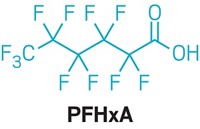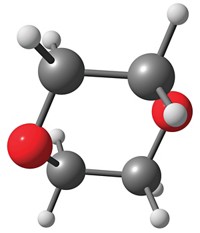Advertisement
Grab your lab coat. Let's get started
Welcome!
Welcome!
Create an account below to get 6 C&EN articles per month, receive newsletters and more - all free.
It seems this is your first time logging in online. Please enter the following information to continue.
As an ACS member you automatically get access to this site. All we need is few more details to create your reading experience.
Not you? Sign in with a different account.
Not you? Sign in with a different account.
ERROR 1
ERROR 1
ERROR 2
ERROR 2
ERROR 2
ERROR 2
ERROR 2
Password and Confirm password must match.
If you have an ACS member number, please enter it here so we can link this account to your membership. (optional)
ERROR 2
ACS values your privacy. By submitting your information, you are gaining access to C&EN and subscribing to our weekly newsletter. We use the information you provide to make your reading experience better, and we will never sell your data to third party members.
Environment
Emerging Pollutants Named In Great Lakes
by Cheryl Hogue
September 26, 2011
| A version of this story appeared in
Volume 89, Issue 39
Synthetic musk fragrances—which are used in personal care and cleaning products—and pharmaceuticals are among the eight classes of chemicals that are emerging contaminants in the Great Lakes, according to a report from the International Joint Commission. The organization, which oversees issues affecting waters shared by the U.S. and Canada, says an antiepileptic drug, carbamazepine, was the pharmaceutical most frequently detected coming into drinking water filtration plants in the Great Lakes region. Pesticides are another category of concern, the report says, noting that studies have consistently detected atrazine, metolachlor, and mecoprop in the basin’s waterways. Another group of contaminants consists of brominated and chlorinated flame retardants and chlorinated paraffins. The other classes are perfluorinated surfactants, notably perfluorooctane sulfonate and perfluorooctanoic acid; alkylphenolic substances including the surfactants nonylphenol and octylphenol; plasticizers, especially bisphenol A; and polycyclic aromatic hydrocarbons. The report recommends that regulators conduct a risk assessment for each of the substances of emerging concern.





Join the conversation
Contact the reporter
Submit a Letter to the Editor for publication
Engage with us on Twitter